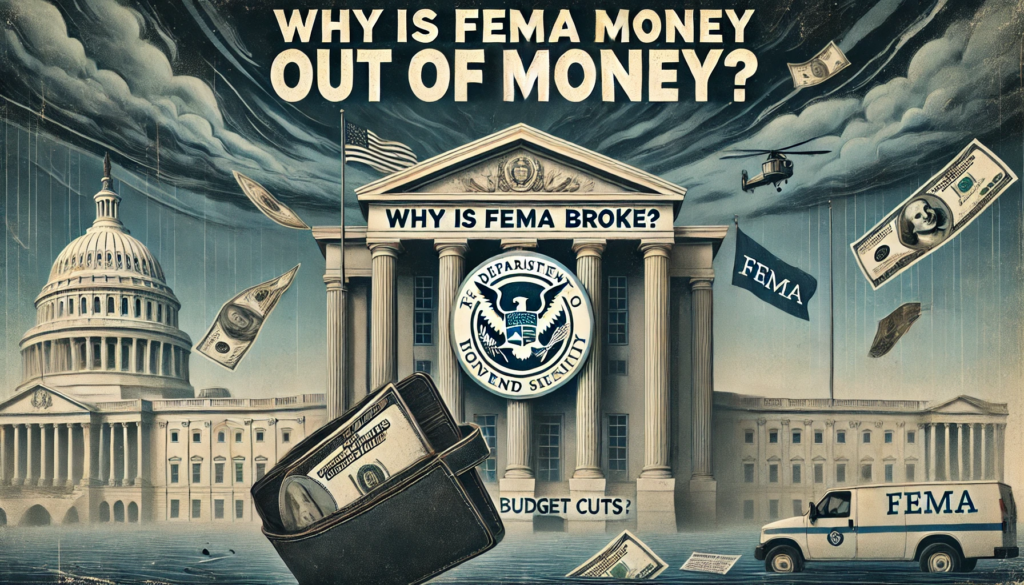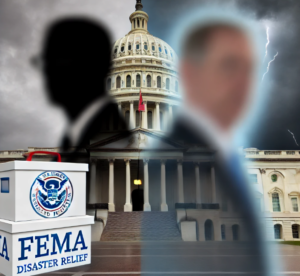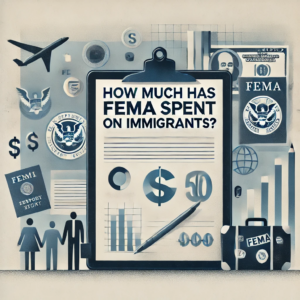
Rumors about FEMA’s financial status are flying. Headlines suggest the agency is broke or running out of cash. But here’s the truth: FEMA isn’t entirely out of money. However, the agency is facing financial challenges due to back-to-back disasters. Let’s explore what’s really happening with FEMA’s budget, the misinformation circulating, and how the agency is managing its funds.
What Does FEMA Do?
FEMA—short for the Federal Emergency Management Agency—is the federal government’s go-to for disaster response and recovery. Whenever a major hurricane, wildfire, or flood hits, FEMA steps in to provide emergency relief. The agency delivers food, water, medical care, temporary shelter, and financial assistance to those affected
But FEMA’s work doesn’t stop after the storm passes. It helps with long-term recovery efforts—rebuilding public infrastructure, restoring homes, and offering grants for hazard mitigation projects. Whether it’s funding new levees to prevent future floods or providing mobile homes after a hurricane, FEMA is involved every step of the way
Is FEMA Really Out of Money?
No, FEMA is not out of money. But the agency is operating on tight financial margins. Its Disaster Relief Fund (DRF) is running low after a series of costly disasters, including Hurricane Helene. FEMA is now shifting to Immediate Needs Funding (INF). This strategy allows the agency to focus on critical, life-saving operations—like emergency rescue efforts—while putting some longer-term recovery projects on hold until additional funding is secured
There’s also been some misinformation circulating about FEMA’s financial troubles. For example, a rumor claimed that FEMA ran out of money because funds were diverted to support migrants at the southern border. This is false. FEMA has clarified that migrant support funding comes from a different budget allocation, which doesn’t interfere with disaster relief efforts
Why is FEMA’s Budget Struggling?
The real issue lies in the increasing frequency and severity of disasters. Climate change is creating more powerful hurricanes, extreme wildfires, and severe floods. In the last few years, FEMA has had to respond to multiple large-scale disasters simultaneously, which has stretched the agency’s resources thin.
Hurricane Helene alone required over $210 million in relief funds, and FEMA is already preparing for more expenses with Hurricane Milton approaching Florida’s Gulf Coast
To make matters worse, Congress has been slow to approve additional funding. Without timely financial support from lawmakers, FEMA has no choice but to prioritize immediate needs while delaying some recovery and rebuilding efforts
How Will FEMA Manage Going Forward?
FEMA’s financial situation is serious, but it’s not hopeless. The agency’s switch to Immediate Needs Funding ensures that rescue operations and emergency supplies will continue to flow, even if longer-term recovery slows down. FEMA officials have stressed that life-saving efforts will not stop as they await additional funding from Congress
Looking ahead, FEMA will need more consistent financial backing to keep up with the increasing demands of disaster recovery. As the climate crisis intensifies, the agency’s responsibilities—and expenses—will only grow.
FEMA isn’t broke, but it’s operating on a tight budget. If Congress doesn’t act quickly, recovery efforts could face further delays, impacting communities in need. With future storms on the horizon, FEMA’s financial challenges are a reminder that preparedness and funding must evolve to match the reality of today’s disaster landscape.






